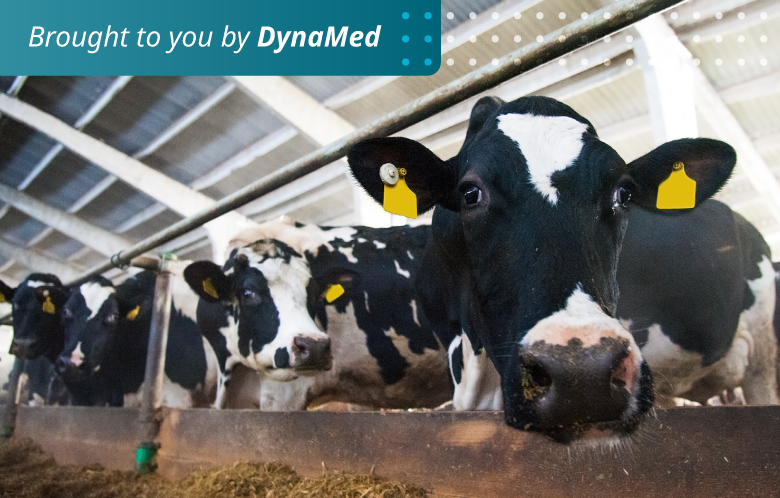Between March 2024 and February 2025, there have been 69 confirmed cases of H5N1 avian influenza (commonly known as bird flu) reported in the United States, primarily affecting dairy and poultry farm workers.
The Infectious Disease team at DynaMedex updates and answers some new questions about bird flu. See H5N1 Avian Influenza (Bird Flu) From Dairy Cows – Your Questions, Answered published on July 17, 2024 for additional information on bird flu.
What is avian influenza (bird flu)?
Avian influenza refers to influenza A viruses that primarily circulate in wild and domestic birds, hence the colloquial name “bird flu.” The H5N1 avian influenza virus causing infections in dairy and poultry farm workers was first detected in humans in Asia in the 1990s and has continued to circulate among birds since then, causing occasional spillover cases in humans. Although avian flu viruses have not yet acquired the ability to be transmitted efficiently among humans, isolated cases of human-to-human transmission (within households, for example) have been reported. The bird flu cases in the United States over the past year, however, are not connected and have each been acquired by exposure to infected dairy cows, poultry, or wild birds.
Is bird flu different than regular seasonal influenza?
Yes. Seasonal influenza causes millions of infections each year. This year is particularly bad relative to the past few seasons and cases continue to rise. Seasonal flu is commonly caused by the influenza A virus of H1N1 or H3N2 subtypes, but it can also be caused by influenza B virus. Seasonal influenza virus is of human origin (not birds, pigs, or other animals) and is transmitted easily from person-to-person, which accounts for large seasonal outbreaks each year.
What does bird flu have to do with cows?
Cows are an intermediary host, meaning that they are getting infected from birds (possibly by consuming grasses contaminated with bird feces). This is the first time that H5N1 bird flu has ever been detected in cows and currently 972 dairy farms in 16 states have reported positive H5N1 testing in their herds. The cases of H5N1 infection detected in dairy farm workers are associated with close contact with infected cows and it is thought that they may have acquired the infection during the milking process.
Additionally, H5N1 has been detected in every state in the United States, affecting more than 160 million poultry and over 12,000 wild birds. The CDC is working with the U.S. Department of Agriculture (USDA), Health Resources and Services Administration (HRSA), Occupational Safety and Health Administration (OSHA), the National Center for Farmworker Health, and local agriculture agencies to provide surveillance and guidance for farm workers.
What is the risk of bird flu to me (general public)?
The risk of bird flu to the general public remains low. The highest risk groups are dairy and poultry farm workers with close, prolonged and unprotected contact with infected birds or cows. Everyone working with poultry, cattle, and other livestock or their byproducts (viscera, raw milk, etc.) should take extra precautions to reduce the risk of acquiring H5N1; this includes people with backyard flocks.
Additionally, people should avoid exposure to dead animals, unpasteurized (raw) milk products and undercooked animal products, and contact with animal waste, bedding, or materials potentially contaminated with avian influenza.
What is the risk of bird flu from drinking milk or eating chicken or eggs?
Unpasteurized milk and products made from raw milk can be contaminated with a variety of infectious pathogens, including H5N1. In fact, H5N1 influenza has been detected in unpasteurized (raw) milk collected from infected dairy cows. While the risk of contracting H5N1 bird flu from unpasteurized milk is unknown, pasteurization kills disease-causing pathogens including avian influenza virus. Consumption of only pasteurized milk and products made from pasteurized milk is recommended.
Luckily, one of the first signs of illness in poultry is decreased egg production, which is good for human egg consumption since sick birds tend not to lay eggs. Regardless, cooking eggs and poultry to an internal temperature of 165⁰F kills bacteria and viruses, including avian influenza.
Are my pets at risk for bird flu?
It’s not common for bird flu to affect pets like cats and dogs, but it can occur. Two dairy farm outbreaks of bird flu in 2024 included death of barn cats living on the farms. Genetic analysis identified the same strain of H5N1 in the affected cows and cats and it’s thought that the cats acquired bird flu from drinking raw milk from the cattle.
Pet owners should take all steps to prevent their pets from having contact with wild birds and outdoor environments that could be potentially contaminated. Clinical signs of illness in cats include fever, lethargy, low appetite, eye inflammation, discharge from the eyes or nose, difficulty breathing, and neurologic signs. It is recommended to contact a veterinarian for any pet displaying these signs, especially if they go outdoors.


